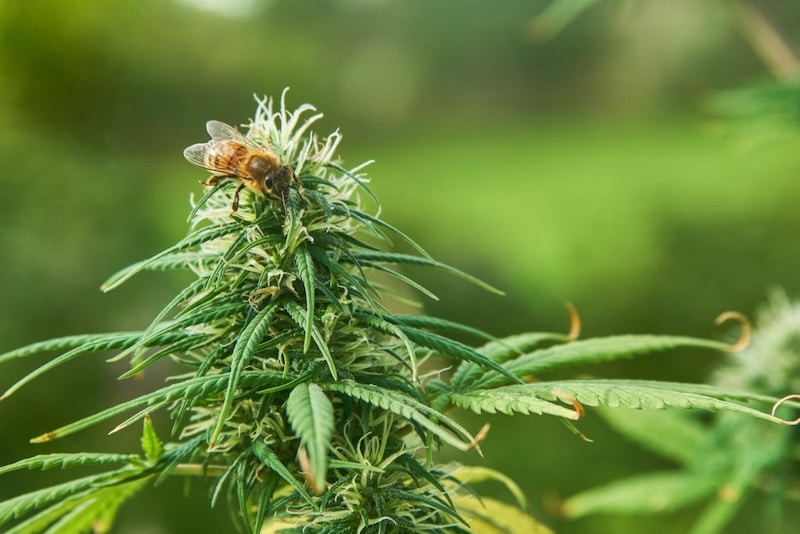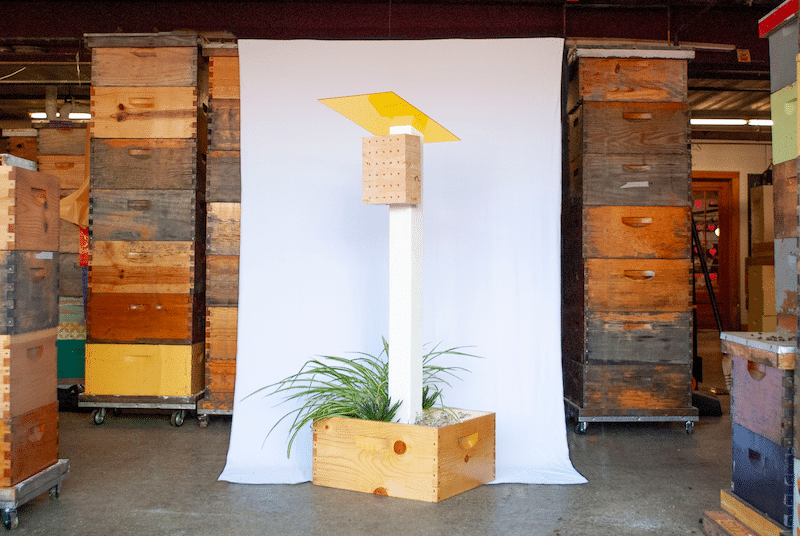Contents:
- What is a Bee Swarm?
- What Causes a Bee Swarm?
- When do Bees Usually Swarm?
- What is the Bee Swarm Process?
- Swarming vs Absconding
- Swarms vs Supersedures
- Is a Bee Swarm Dangerous?
- What Happens in the Original Hive?
- What Best Bees Does to Prevent Swarms
- How Best Bees Handles Swarms
What is a Bee Swarm?
A bee swarm does not mean a large group of bees. When a colony swarms, tens of thousands of bees depart the hive in a chaotic whirl, eventually settling on nearby structures, such as a tree branch, before finally relocating to their new nest site.
–– Interested to know how the bees are doing? Download our State of the Honey Bee Report now ––
Swarming is a means for colonies to reproduce; they are a natural part of honey bee biology. At first glance, a swarm can look scary with so many bees visible in one place; however, swarming bees are very docile. In fact, swarms only cause problems in most urban beekeeping environments because of the perceived risk to the public.
What Causes A Bee Swarm?
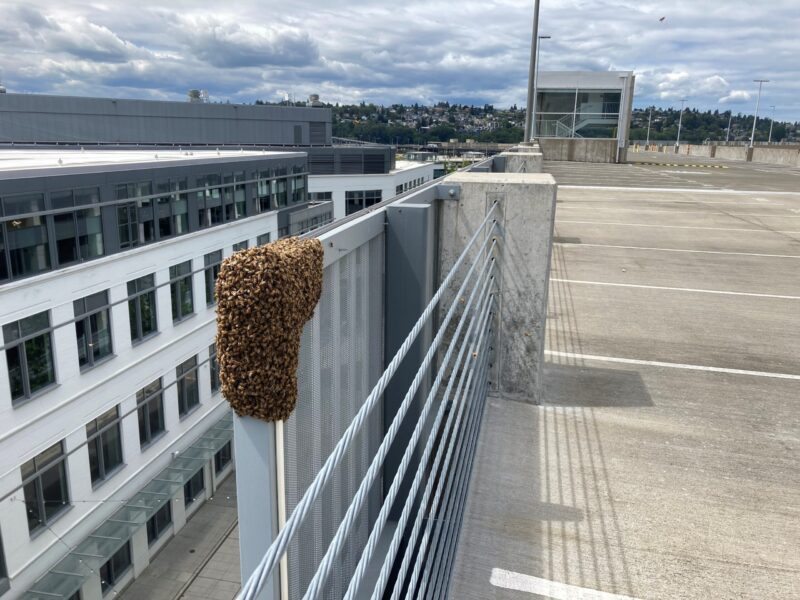
As the weather warms up and we get further into the year, the bees get busy rearing lots of brood to bolster their population and add to the workforce. There’s a lot of foraging to do, after all, and honey to be produced. However, with rapid population growth comes the possibility of the colony swarming. The most common cause of a bee swarm is that the colony just outgrew their hive! A large population may lead to the colony running out of space to store honey and brood, hindering the workings of the hive.
Another aspect of rapid population growth is that when the hive is too densely populated for the queen bee’s pheromones to control the entire workforce, the colony can not function properly. The queen pheromone ensures the maintenance of worker cohesion, suppression of queen rearing, inhibition of worker reproduction, and stimulation of worker activities: cleaning, building, foraging, and brood feeding. If the hive is overly congested, the workers signal that it is time to swarm so that half of their number will leave and start a new colony.
Honey bees are very particular about the conditions of their hive, especially the internal temperature and humidity. A densely populated hive is one with more body heat and less ventilation, which can lead to a hot and humid hive. External conditions can have this effect as well – scorching, super humid weather can lead the bees to swarm, as they try to alleviate the unpleasant hive conditions.
When Do Bees Usually Swarm?
A bee swarm usually occurs during the spring, between March and May, when a vide variety of plants are in bloom and nectar and pollen resources are plentiful. In the spring, the hive will experience a great deal of population growth as the bees come out of winter and prepare to forage from the freshly blooming flowers. Changing weather conditions, from the cold of winter to the warmth of spring, seems to stimulate a natural urge of bees to swarm.
It is not uncommon, however, to see a bee swarm in the summer – as mentioned earlier, overly hot temperatures inside the hive, as well as high humidity, can lead to swarming.
What Is The Swarm Process?
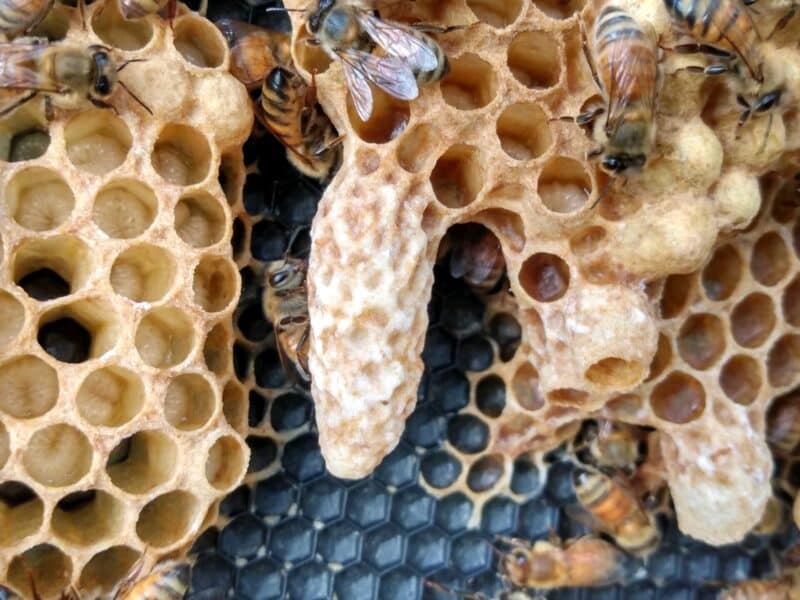
Swarms are prepared for weeks in advance; there are many tasks to be done to get ready for the actual event of swarming. Some worker bees serve as scout bees and seek out possible nesting sites. Other workers begin building swarm cells for new queens – these cells are also called “queen cells.” They are larger than regular brood cells, and look similar to peanut shells. Once those are constructed, and the queen lays eggs in them, the colony changes its usual behavior. Foraging slows down, and the workers will feed the queen less food (and even force her to move around more!) so that she slims down, reducing her weight to be able to fly. The workers take the eggs the queen laid in the swarm cells and turn them into developing queen bees.
When all preparations are completed, the colony is ready to swarm. On a warm day usually between 10:00 AM and 2:00 PM, the hive becomes very active. Workers frantically run around inside the hive; they chase the queen and keep her moving until she is willing to leave the hive. All of the honey bees leaving the nest will stuff themselves with nectar to fuel them on their journey. They will depart the hive in thousands, with the workers gathered around the queen. She’s not the strongest of flyers, so she will soon need to rest on a nearby tree, bush, or other structure.
Immediately after landing and for the next 24 to 36 hours, the bee swarm forms a clump around the queen as the scout bees go ahead to find their new hive location. Upon finding possible sites, the scouts will return back to the swarm and perform a waggle dance to tell the other colony members about the location. Eventually, the whole bee swarm will go through a kind of democratic process to decide which location would be best. After that, they will depart from their temporary perch and proceed to their new location, where they will begin building comb, developing new brood, and gathering pollen and nectar.
Swarming vs Absconding
When a bee colony swarms, they split into two – half of the colony leaves with the old queen to form a new, separate colony, and the other half remains behind in the old hive with a new queen. Absconding is when all of the bees, including the queen, abandon the hive completely. This could be due to lack of food or water, parasite or disease infestation, external threats from predators, weather changes, problems with the hive itself, etc. Swarming usually happens in the spring or summer; absconding usually happens in the fall. A colony that absconds is still one colony, even if the bees don’t leave in one big group. Sometimes they will leave in smaller groups over a number of days; they are still going to find their colony, not form a new one.
Swarming vs Supersedures
A supersedure is the natural process of a queen replacement in a honey bee colony, without swarming. The queens that are replaced in this way are usually old, failing, sick, or defective in some way. Supersedure is a very common, normal, and expected behavior in beehives. The bees don’t do these things randomly; they are constantly assessing the health and strength of their queen to ensure that she is fulfilling her role. If she can’t, then the bees need a queen who can, and they will take action into their own hands. Regicide may seem very Game of Thrones, but the bees have been doing it for thousands of years as a natural method of survival.
Is A Bee Swarm Dangerous?

A bee swarm is not dangerous! Honey bees sting in defense of their hive; when they are swarming, they are looking for a new home, not defending one they already have. They are focused on moving to their new location, and are unlikely to be distracted by passerby.
Additionally, before honey bees depart their natal hive, swarms overload on honey and nectar to provide them enough fuel to last them on their journey of finding a new home. This food also helps them to produce wax to begin building the new comb. Now, think back to the last time you ate a big meal. Did you enter a ‘food coma,’ meaning you were in a state of Zen after you finished eating? Just like the human body, bees tend to reduce their activity when swarming.
What Happens in the Original Hive?
The queens developing in the swarm cells in the original hive are attended by the workers who did not leave with the swarm. After about a week, the new queens begin to emerge. The first queen to emerge, if she is strong and healthy, will sting the other queens in their cells and kill them in order to assume the role as the new queen for the colony. The virgin queen will then make a mating flight to find drones to mate with in order to begin the process of egg-laying and rebuilding the colony’s population.
What Best Bees Does To Prevent Swarms
At Best Bees, there are several methods we employ to prevent our bees from swarming. Though it is a natural process, as beekeepers, we like our colonies to remain in one piece!
During swarm season, we make sure to give our bees plenty of room. They need space to rear brood, store honey, nectar, and pollen, and produce beeswax. By adding a box, or super, we provide the bees with that necessary space, as well as minimize the chances of an overly congested hive. Think about packing a large crowd in a small room – it gets pretty hot and uncomfortable fast, right? If you move that large crowd to a larger room, it’s much more pleasant.
Additionally, building off of our crowded room metaphor, if there’s no air conditioning or ventilation, the space is going to get hot and humid no matter how big it is. This is why Best Bees beekeepers also make sure that our hives are well-ventilated, have proper drainage, and that there is sufficient airflow through the hive.
Lastly, if our beekeepers notice that the colony is producing queen cells, they will remove them – this stops the swarming processes and gives us time to remove frames, add supers, improve ventilation, etc.
How Best Bees Handles Swarms
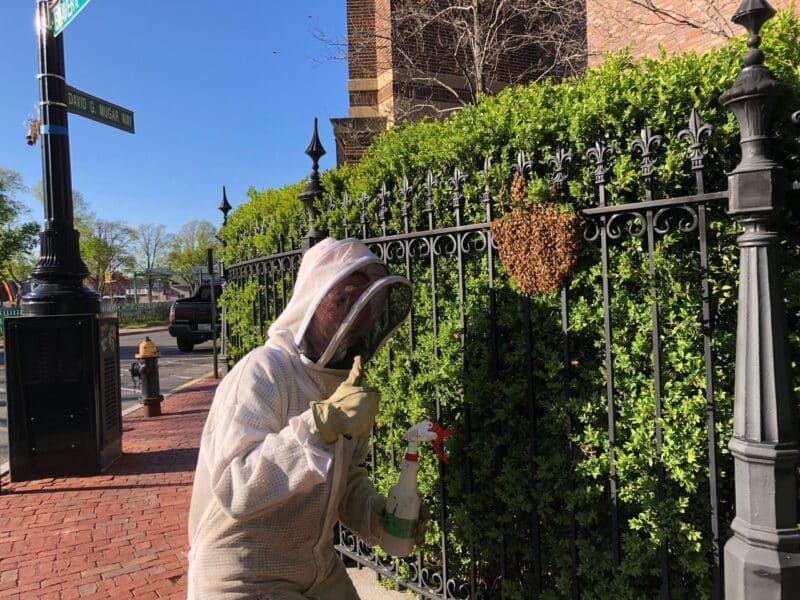
After a colony has swarmed, we will conduct a thorough hive check. During this check, we make sure that the colony has adequate resources – we want them to have sufficient stores of honey, pollen, and bee bread to tide them over until their workforce is back up to normal levels. We also check on the queen’s ascendency; there are a few different things we look for:
- Numerous healthy queen cells (special, peanut-shaped wax structures that protect the developing queens) that are ready to hatch.
- One queen cell that has hatched, and the others have tears or cuts in them from when the new queen stung her competitors.
- The new queen is present in the hive, and has possibly started laying eggs.
After assessing the situation, our Best Bees beekeepers may determine that the hive would most benefit from being requeened with a new queen from our stock. That queen will either be introduced to the hive via a queen cage or a combo. A queen cage contains a queen bee, along with a few worker bees serving as her attendants. The cage keeps her safe while the bees of the colony get used to her pheromones and then accept this new queen as their own. Once the time is right, the queen’s attendants will chew through the candy stopper at the end of the cage, releasing the queen and allowing her to get busy laying eggs to support the growth of the colony.
A combo is usually five frames that contain a queen bee, brood, larvae, and worker bees. The old and the new bees are separated by a layer of newspaper to keep the new queen safe while the bees get used to each other’s pheromones. The bees have to tear through the paper before they can interact, and this process takes them some time, allowing the pheromones to mingle. By the time the new and old bees can pass through the paper, they will have accepted each other as their own.
When installing new queens, we prioritize locally reared queens because their DNA is adapted for survival in their specific environment. This year, Best Bees is committing resources to rear our own queen bees.
FAQs
Q: Is a bee swarm dangerous?
A: No! Swarming bees are at their most docile.
Q: When do swarms occur?
A: Bees usually swarm during the spring, between March and May, when there are lots of nectar and pollen resources available. It is not uncommon, however, to see swarms in the summer.
Q: Does the colony split into two different colonies?
A: Yes, the original colony will split into two – one of the colonies will leave with the old queen, and the other will remain in the hive with a new queen.
Q: What should I do if I see a bee swarm?
A: Check out our swarm resources page, HERE.





